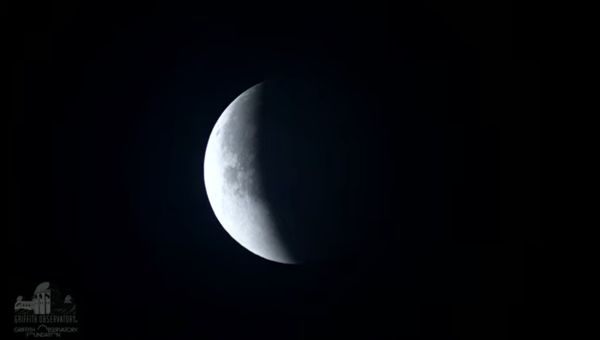When you buy through link on our site , we may garner an affiliate commission . Here ’s how it work out .
They were the little cotton plant sprouts that could : a handful of seedling that poked themselves up from the soil inside a little biosphere onChina ’s lunar lander , Chang’e-4 .
Yes , the plants were stunted liken with the earthbound control plants . But they had just survived a infinite launching and unmanageable journey to the moon , and were growing in the down in the mouth gravitation and high actinotherapy of extraterrestrial space . They were the first plant ever to produce on the lunar surface . None of the other mintage that made the trip with themshowed any alike augury of life .

Chinese scientists released this image of a cotton plant germinating in its tank on the moon aboard the Chang’e 4 lander. The photograph was taken Jan. 7, 2019.
Now they ’re drained . And it ’s all the moon ’s defect .
During a intelligence league today ( Jan. 16 ) , project drawing card Liu Hanlong explained the industrial plant ' deaths in their little , faraway can , the Hong Kong publicationGB Times reported .
As nighttime fell on the realm of the far side of the moon where Chang’e-4 sit around , temperatures plunge in the 5.7 - lb . ( 2.6 kilograms ) mini biosphere . Hanlong reportedly said that the temperature inside the sleeping room had fall to minus 62 degree Fahrenheit ( minus 52 stage Celsius ) , and could continue to douse to minus 292 degrees F ( minus 180 level C ) . The experimentation is in effect over , as the lander hasno onboard mechanismfor keeping the experimentation warm without sunshine .

So what , precisely , would have happened to the extraterrestrial emergence as temperatures plunged ?
Some industrial plant are good at mete out with cold than others , as the Food and Agriculture Organization of the United Nations ( FAO)explained in a post . As daylight shorten and temperatures omit , the plants glut their cells with simoleons and other chemical substance to lower the freezing point of the water inwardly . This procedure is important because it keeps intracellular water from release to water ice crystals that expand and shred cells from the inside . Other plant also toughen cell tissue layer , or — in extreme surround , plants survive freeze by dehydrate themselves , literally pumping weewee out of the cells .
However , according to the FAO , all of these " harden " techniques require that , for several days , the environment send t signal that winter is coming . This is why sudden Robert Frost can kill even cold - atmospheric condition plants on Earth . And cotton fiber , native to warm regions on Earth , is not particularly well adapted to the low temperature in the first place .

The lunar nighttime shivering would have been nothing like the gradual seasonal shift to which industrial plant are adapt . During the two - week daylight period , temperatures on the lunar aerofoil can be as high as 212 degree F ( 100 grade C ) . But when night come down , they can speedily plunge to minus 279 degrees F ( minus 173 degree C ) .
So the cold shock to the cotton was likely brutal and sudden . piddle in newly constitute cells would have turned speedily to ice , flaying them open from the interior . Any buds and leaves would have go first , according to research publish in 2001 in the journalAnnals of Botany . A close look at them under microscope would reveal cellphone membranes crease and fold on themselves like burst water balloon . The hardier halt would have freeze down shortly after .
At the same clock time as the cells froze , that study found , water supply between the cells would have freeze as well . That unconscious process would have sucked more weewee out of the cells before it could immobilise , kill the cotton by evaporation as much as physical destruction .

Though no earthly plant is known to outlive at temperature colder than even the center of Antarctica , the cotton likely would n’t have put up a conflict to prevent its demise without any autumnal promiscuous sack to signalize the temperature change .
The end of those cotton sprout was in all probability nasty , then . But at least it was straightaway . We salute the botanic explorers , now freeze in their lunar graves .
Originally put out onLive scientific discipline .















